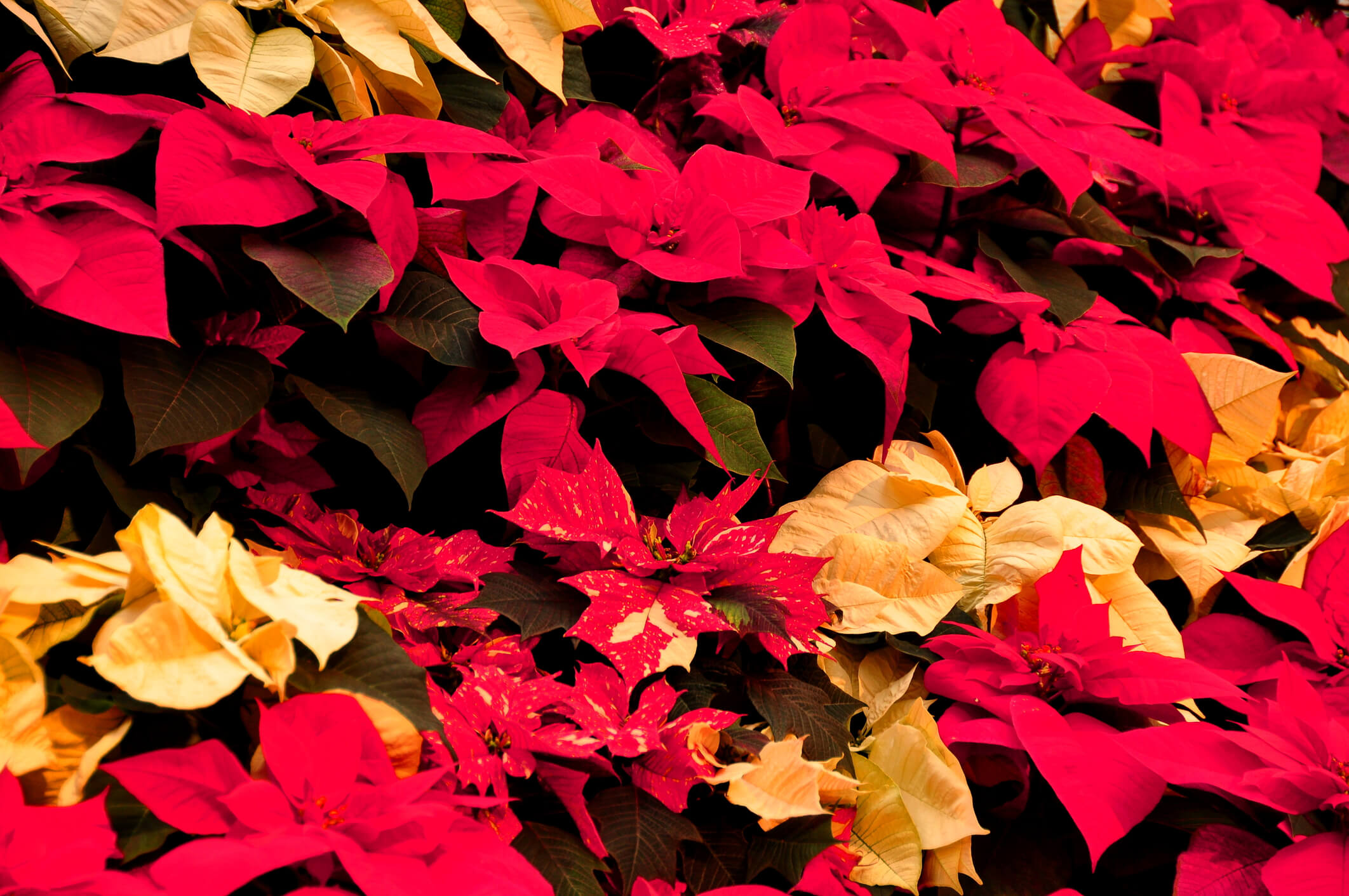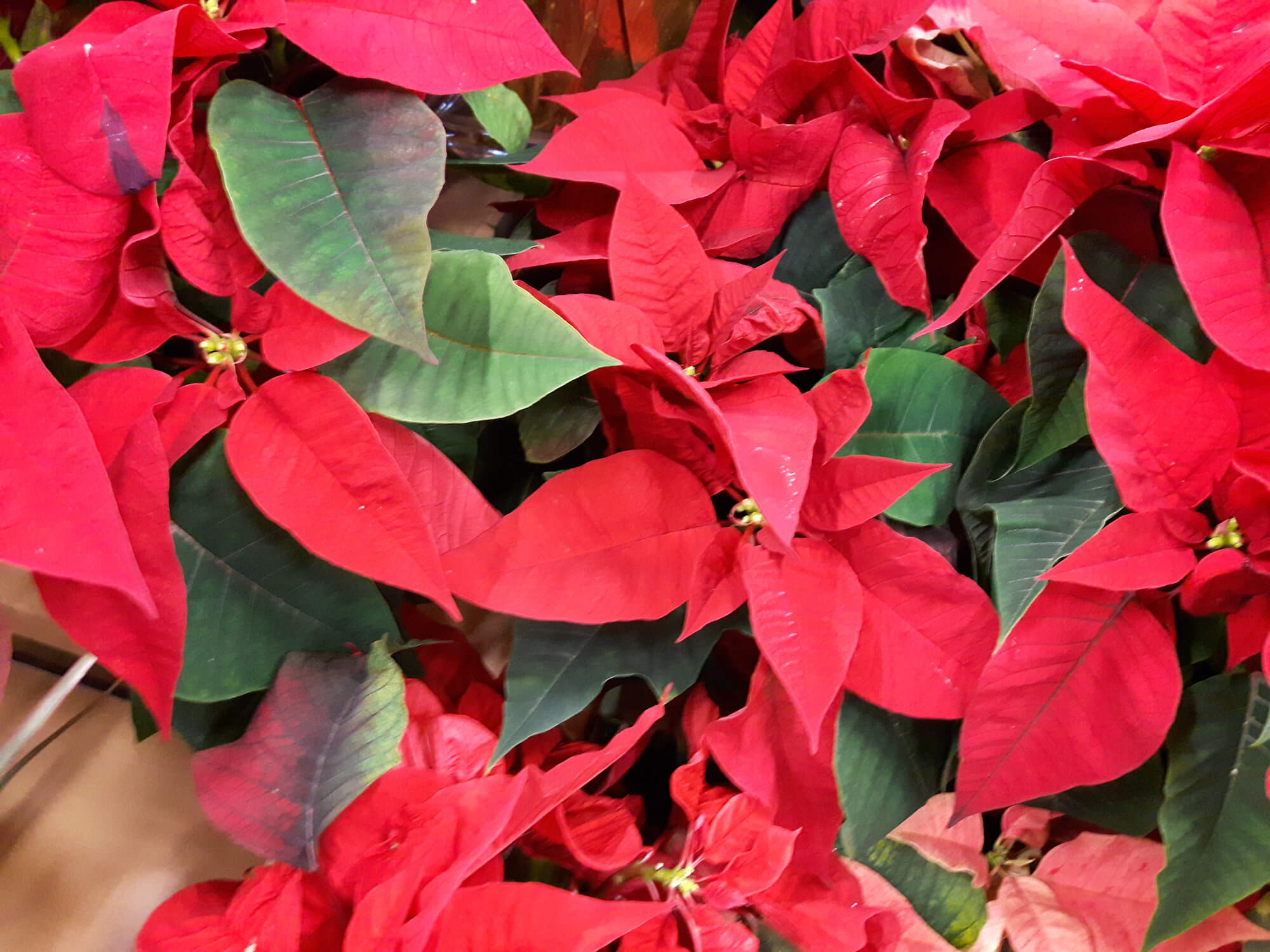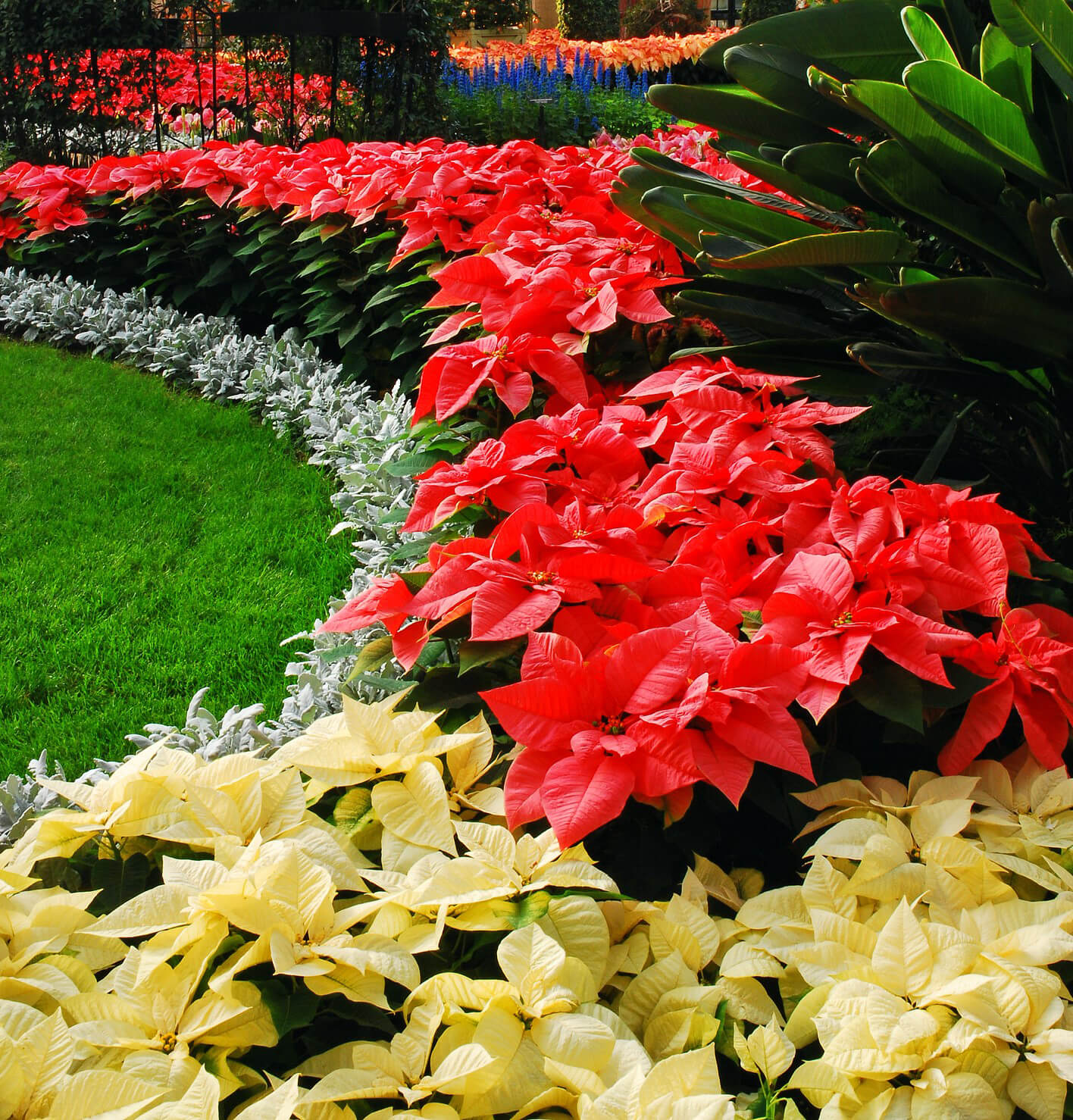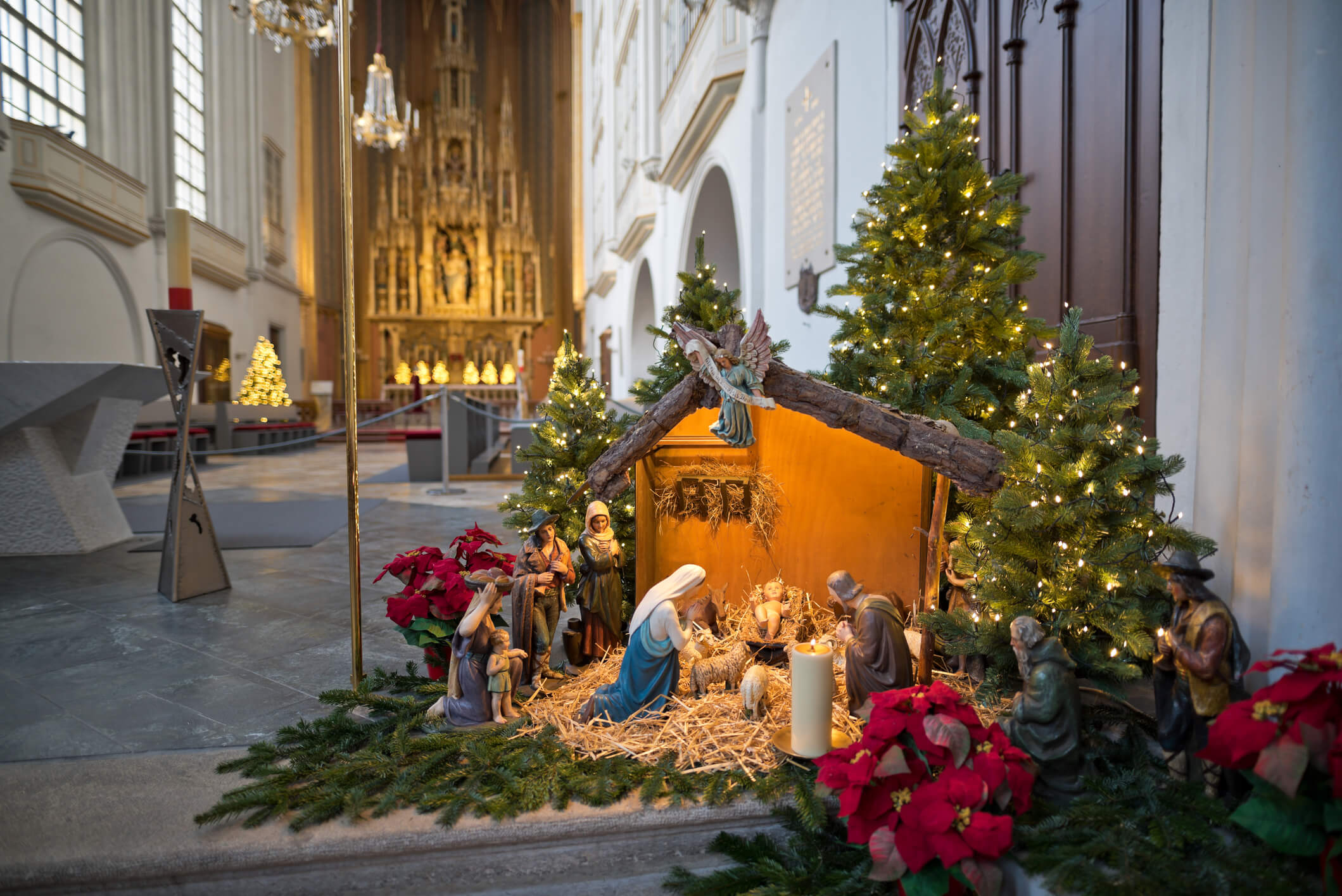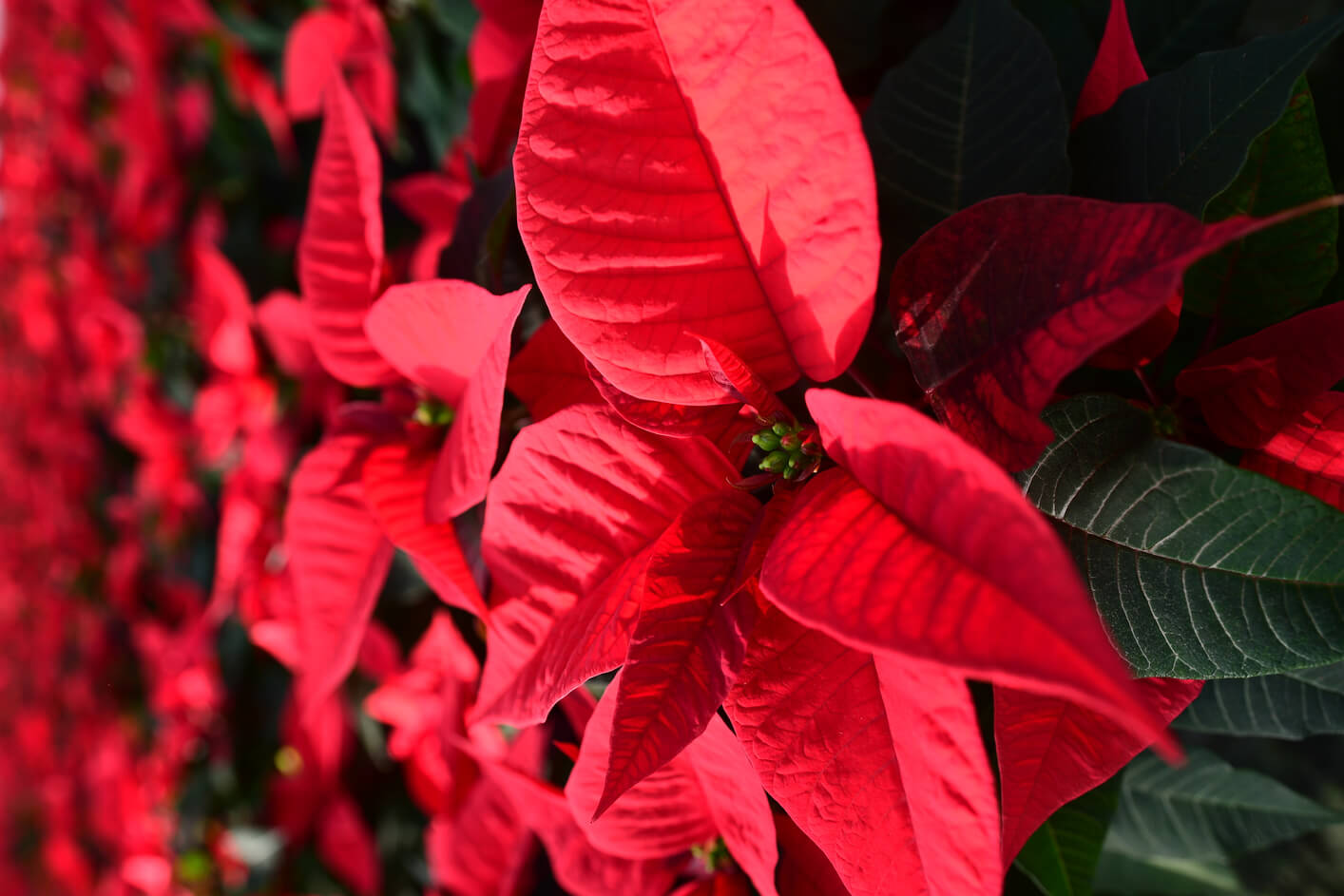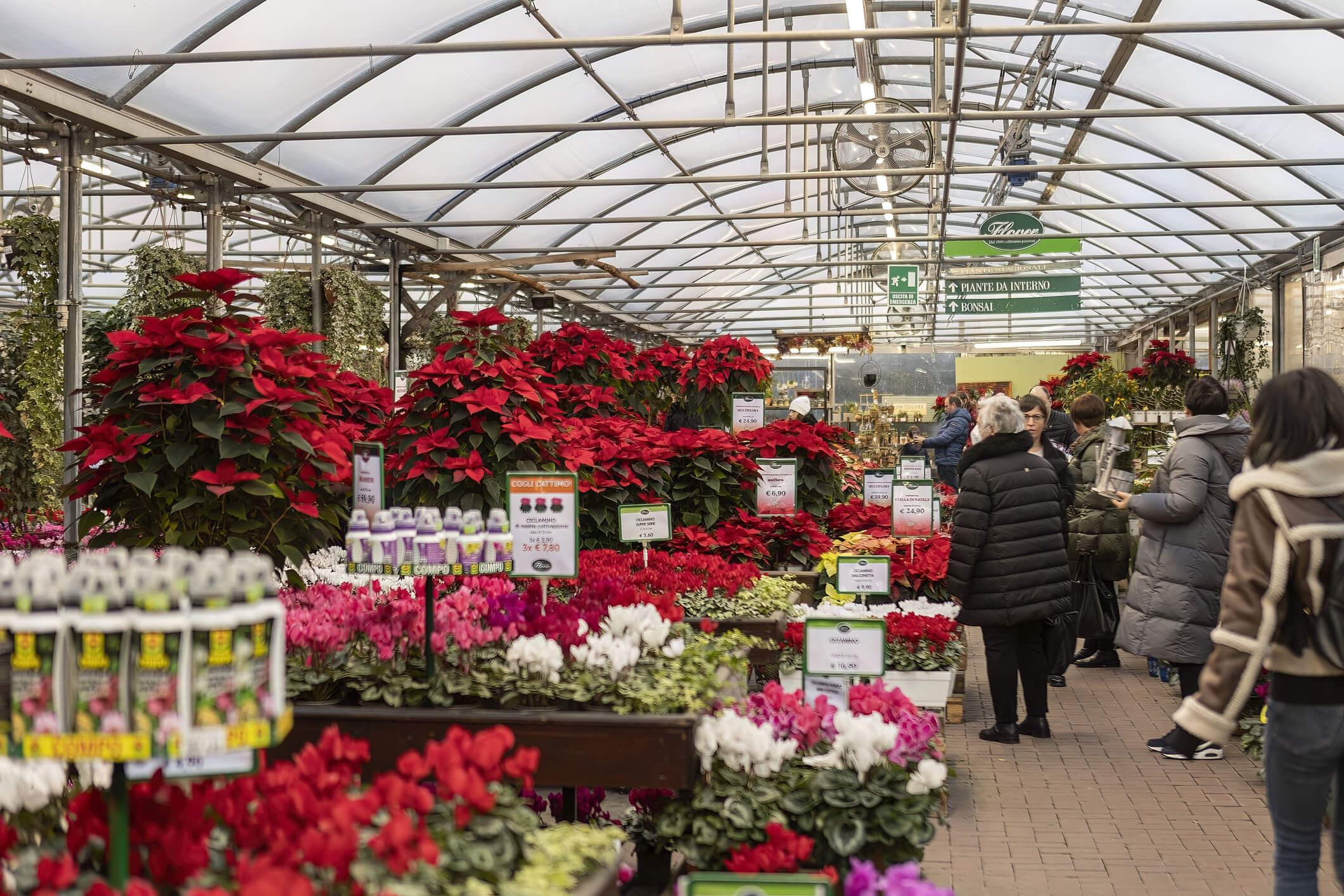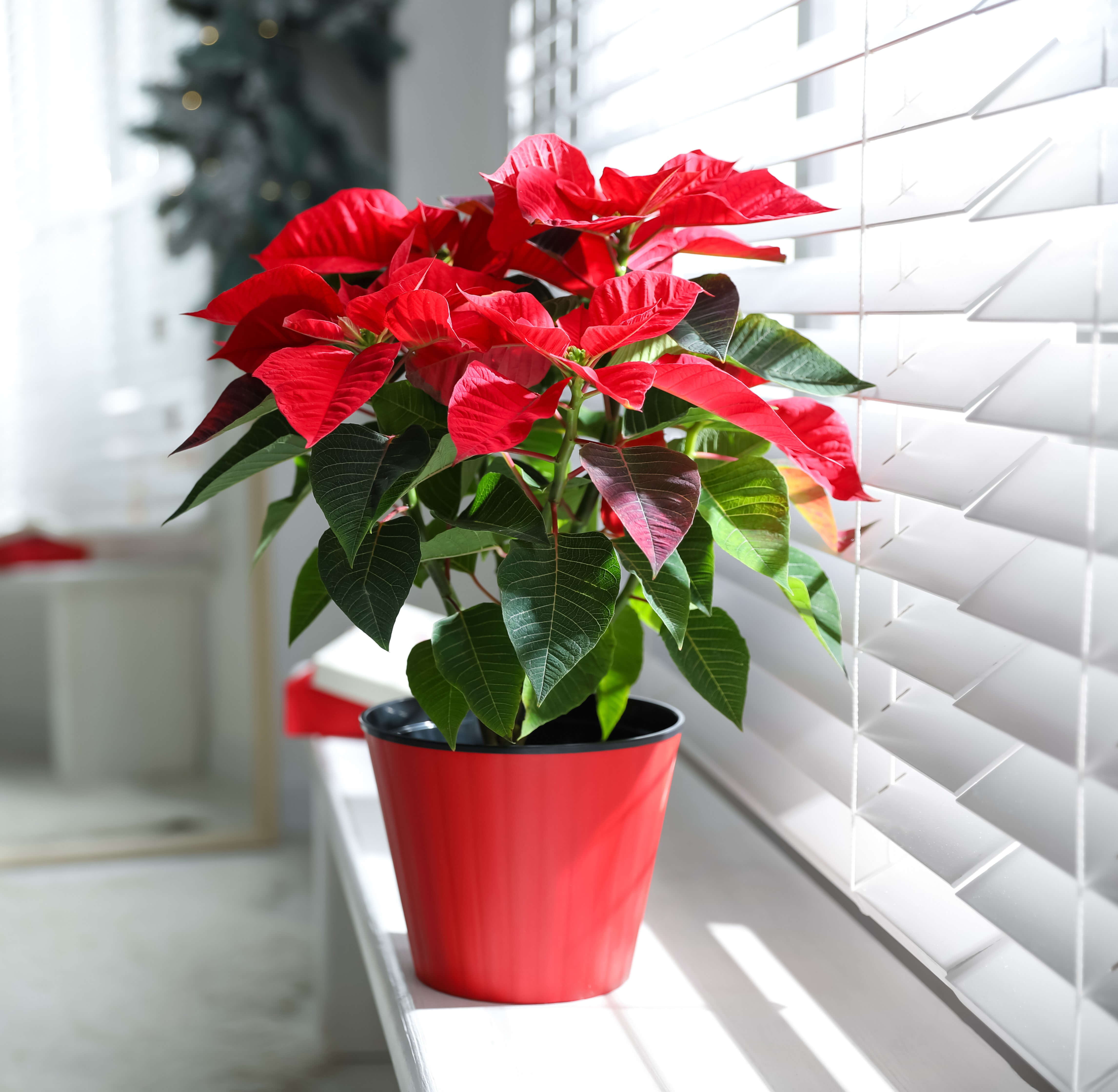.jpg)
Wednesday afternoon I had a doctor’s appointment. Instead of the usual small talk, I found myself in the middle of an interoffice debate. The burning question of the day was “Is it pronounced POINT-SET-A or POINT- SET- TI-A? And are they really BLUE now?" I knew what Robin my nurse wanted me to say, but I just couldn’t lie; I had to tell her…our beloved Christmas flower’s name is really pronounced poyn·seh-tee-uh. It has that letter i in the last syllable. She didn’t love my answer, but at least I could tell her that the plant she was looking at was dyed, not natural.
With National Poinsettia Day right around the corner, on December 12th, it seems like a great time to learn a little more about this traditional Christmas bloom. Poinsettia plants, which are native to southern Mexico, were known to be highly valued by the Aztecs . The bracts - the brightly colored portions that look like flower petals - were used to make a reddish- purple dye for both clothing and cosmetics. The milky white substance, latex, that flows from a broken leaf or stem, was used as a medication to treat fevers. (As an aside, the latex can cause a significant reaction in people who are allergic to latex. Contrary to the old wives tale. it is not typically toxic to humans or pets.)  The brilliant red blooms were part of midwinter celebrations, signifying purity gained from blood sacrifice. In the 17th century, Catholic priests adapted the native beliefs and introduced the poinsettia into a nativity procession. The blood sacrifice of the Aztecs became the blood sacrifice of Christ.
The brilliant red blooms were part of midwinter celebrations, signifying purity gained from blood sacrifice. In the 17th century, Catholic priests adapted the native beliefs and introduced the poinsettia into a nativity procession. The blood sacrifice of the Aztecs became the blood sacrifice of Christ.
In 1825, Joel R. Poinsett, a botanist and the first U.S. minister to Mexico, became enthralled by the plants and shipped some to his home in South Carolina. When he returned to the United States, he shared his plants with others around the country who were plant enthusiasts. In the 1920s, Paul Ecke, Sr. was so delighted by the plants that he began field growing the plants at his California home.  He sold them as cut flowers and also began to ship plants across the country in railroad cars. By the 1960s, he brought the demand for Christmas poinsettias to a new high by promoting them on Bob Hope Specials and the Tonight Show.
He sold them as cut flowers and also began to ship plants across the country in railroad cars. By the 1960s, he brought the demand for Christmas poinsettias to a new high by promoting them on Bob Hope Specials and the Tonight Show.
Soon after, production of poinsettia plants shifted from field production to greenhouse production. With that switch, breeders began to develop new, improved cultivars that would have stronger stems, would hold on to their bracts and leaves for a longer time period, would bloom earlier and would have color variations.
Because of their early work and the continuing efforts of breeders, we have a multitude of choices today. Not only are poinsettias available in red, but they appear in festive colors ranging from a deep burgundy to shades of speckled pinks and reds.

Given the right conditions, today’s poinsettias can hold their color and brighten your home throughout the gloomy winter season. They do best in moderately moist, but never soggy, soil. Water them thoroughly but make sure that they do not sit in standing water. (If your plant has a foil wrapper, be sure to remove it before you water.) Their preferred temperature range is 60 to 70 degrees F, and need at least 6 hours a day of indirect sunlight. Keep them out of drafts – both hot or cold. While in bloom, a poinsettia does not need fertilization.  Periodically examine your plant for signs of insect infestation. Poinsettias are prone to mealybugs and whiteflies. Mealybugs can be removed with a Q-tip dipped in rubbing alcohol.
Periodically examine your plant for signs of insect infestation. Poinsettias are prone to mealybugs and whiteflies. Mealybugs can be removed with a Q-tip dipped in rubbing alcohol.
It’s important to bring home healthy plants, so do take some time to closely examine before you purchase! When buying a traditional red poinsettia, look for specimens with uniform, dark green leaves. If the cultivar you are considering has light colored bracts, then the leaves will also be lighter in color. Make sure that the leaves are dense and there are no bare stems showing. Check to see if there is a dusting of yellow pollen on the bracts. If the small yellow flowers in the middle of the bracts are already blooming and pollen is visible, then the plant is already on a downward spiral. If the pot feels extremely light or the soil is dry, the plant has been stressed. While it can initially recover, it simply won’t be at its best. Try to avoid buying from tightly packed displays. Good air flow is essential to a healthy plant. Finally, don’t subject your plant to cold temperatures, even for the short drive home. Make sure that it is well-sleeved when you leave the store, and if it’s 35 degrees F or below, wait for a warmer day.
If the cultivar you are considering has light colored bracts, then the leaves will also be lighter in color. Make sure that the leaves are dense and there are no bare stems showing. Check to see if there is a dusting of yellow pollen on the bracts. If the small yellow flowers in the middle of the bracts are already blooming and pollen is visible, then the plant is already on a downward spiral. If the pot feels extremely light or the soil is dry, the plant has been stressed. While it can initially recover, it simply won’t be at its best. Try to avoid buying from tightly packed displays. Good air flow is essential to a healthy plant. Finally, don’t subject your plant to cold temperatures, even for the short drive home. Make sure that it is well-sleeved when you leave the store, and if it’s 35 degrees F or below, wait for a warmer day.
I've checked the weather report for the 12th and it's supposed to be a balmy 47 degrees here. I think I'll plan to celebrate National Poinsettia Day in the best way possible -- filling my house with some gorgeous Christmas color.
